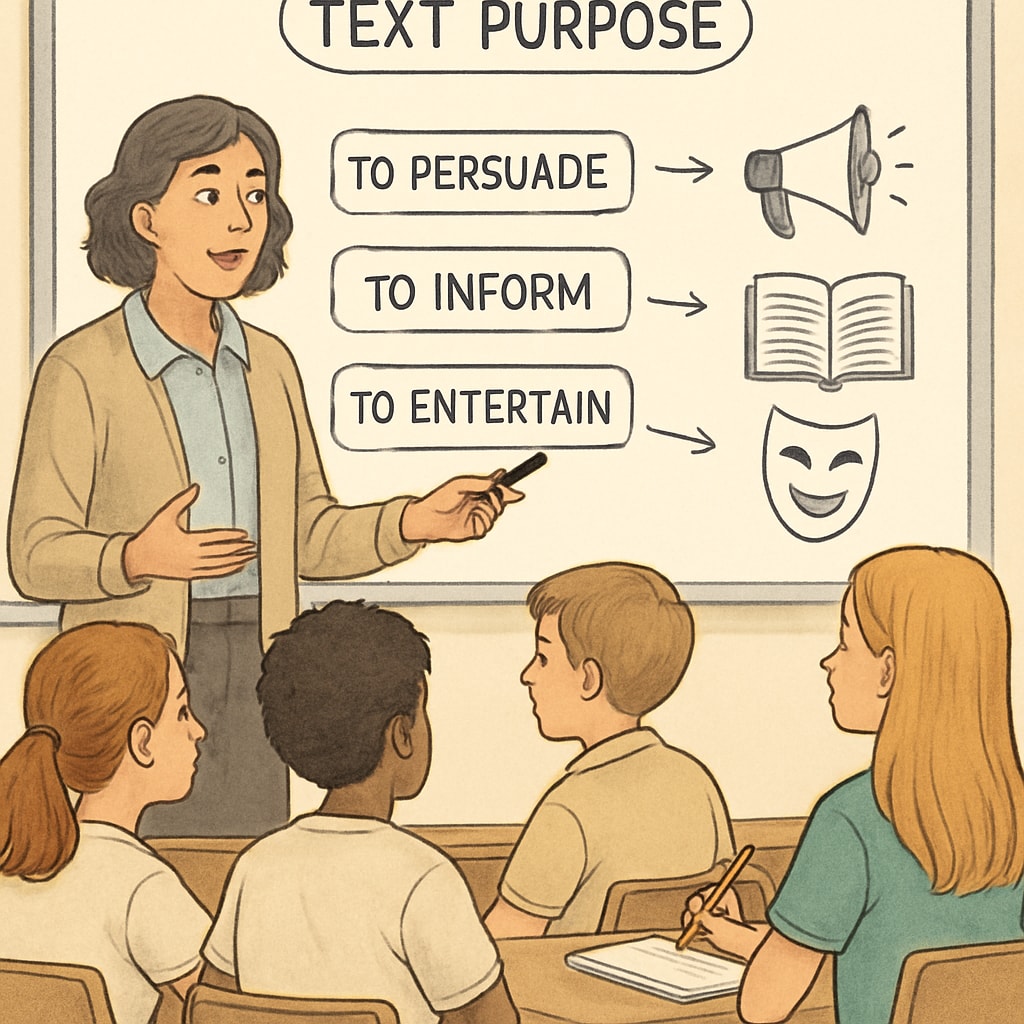Many students preparing for Functional Skills English reading exams often struggle with identifying the purpose of a text. Whether the goal is to inform, explain, or persuade, understanding this fundamental aspect is crucial for success. This article provides a clear strategy for mastering text purpose identification and improving overall reading comprehension skills.
Why Text Purpose Matters in Functional Skills English Exams
The Functional Skills English reading exam evaluates your ability to understand and analyze texts, and identifying the text’s purpose is a key component. Texts are often designed to serve specific functions, such as:
- Informing: Providing factual information or updates.
- Explaining: Clarifying a concept or process step-by-step.
- Persuading: Convincing the reader to adopt a viewpoint or take action.
Recognizing these distinctions not only helps you answer exam questions accurately but also enhances your ability to evaluate real-world texts critically.

Practical Tips to Identify the Purpose of a Text
Identifying the text’s purpose doesn’t have to be difficult. Here are some actionable tips:
- Examine the Title: Titles often provide clues about the text’s intent. For example, “How to Save Energy at Home” suggests an explanatory purpose.
- Focus on Language and Tone: Persuasive texts often use emotional appeals or strong language, while informative texts are factual and neutral.
- Look for Structural Elements: Explanatory texts may include bullet points, headings, or step-by-step instructions, while persuasive texts often feature calls to action.
- Identify the Target Audience: Consider for whom the text is written. A letter from a charity might aim to persuade, while an article in a science journal likely aims to inform.
By applying these techniques, you can systematically decode the text’s purpose and respond confidently to exam questions.
Common Challenges Faced by Students
Even with these strategies, some students encounter specific difficulties in identifying text purposes. Common obstacles include:
- Overlapping Purposes: Some texts may both inform and persuade, requiring careful analysis to determine the primary intent.
- Complex Vocabulary: Challenging language can obscure the text’s goal. Use context clues and focus on the overall message to simplify understanding.
- Time Pressure: Exams impose strict time limits, so practice is essential to improve speed and accuracy.
To overcome these challenges, consistent practice is key. Use past exam papers and sample texts to hone your skills.

How to Prepare Effectively
Preparing for Functional Skills English exams requires a mix of strategy and practice. Here’s how you can prepare effectively:
- Read Widely: Expose yourself to various text types, such as news articles, advertisements, and instructional guides, to familiarize yourself with different purposes.
- Practice Active Reading: Highlight keywords and annotate texts to identify tone, audience, and intent.
- Take Mock Tests: Regularly attempt practice papers to simulate exam conditions and improve your timing.
- Seek Feedback: Work with teachers or peers to review your answers and refine your approach.
In addition, use online resources such as reading comprehension guides on Wikipedia or Britannica’s overview of functional skills for further study.
Conclusion: Mastering Text Purpose for Exam Success
Identifying text purposes is a skill that can be learned and refined with practice. By understanding the distinctions between informing, explaining, and persuading, and applying systematic strategies, you can approach Functional Skills English reading exams with confidence. Remember, each exam is an opportunity to showcase your growth and mastery of English comprehension.
Start preparing today and turn your challenges into strengths!
Readability guidance: Use short paragraphs and lists to summarize key points. Ensure balanced distribution of keywords and maintain a conversational yet professional tone for ease of understanding.


